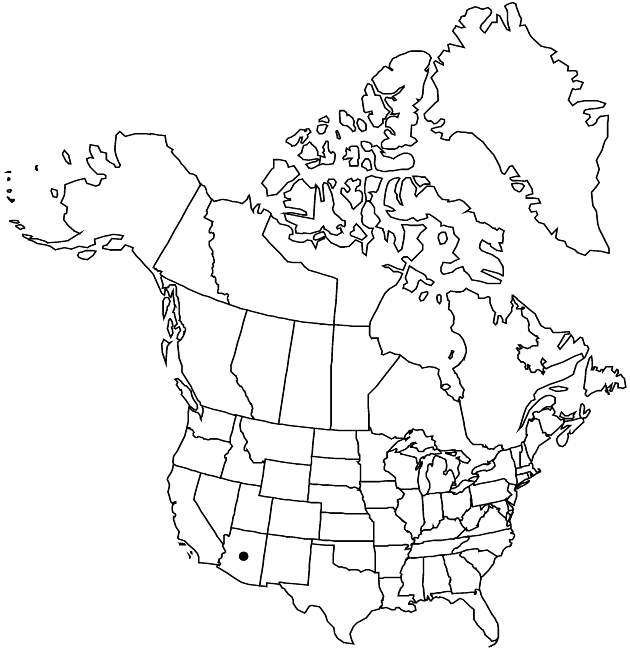Ageratina thyrsiflora
Phytologia 19: 227. 1970.
Perennials or subshrubs, 50–100 cm. Stems erect (usually forming compact ‘bushlets’), finely and evenly puberulent (hairs minute, bent). Leaves usually alternate, sometimes subopposite (densely overlapping internodes); petioles 3–20 mm; blades ovate-lanceolate to triangular, 2.5–6.5 × 1–2.5(–3) cm, bases obtuse to cuneate, margins shallowly and coarsely crenate to serrate to subentire, apices rounded-obtuse, abaxial faces hirtellous. Heads clustered (in dense, terminal aggregates). Peduncles 3–8 mm, puberulent. Involucres 2.5–3 mm. Phyllaries: apices acute to obtuse (dark orange-veined), abaxial faces. Corollas white (orange-veined), glabrous. Cypselae hispid.
Phenology: Flowering Sep–Nov.
Habitat: Rocky sites, oak woodland
Elevation: 1000–2200 m
Distribution

Ariz., Mexico (Chihuahua, Durango, Jalisco, Sinaloa, Sonora).
Discussion
Ageratina thyrsiflora is known from the United States from a single collection dated 1929 from “near Nogales” in Santa Cruz County. It is recognized by its strict, unbranched or few-branched stems with alternate, densely arranged leaves, relatively small heads densely clustered in terminal aggregates, orange-veined phyllaries and corollas, and closely puberulent stems and petioles (hairs minute, sharply upwardly bent).
Selected References
None.